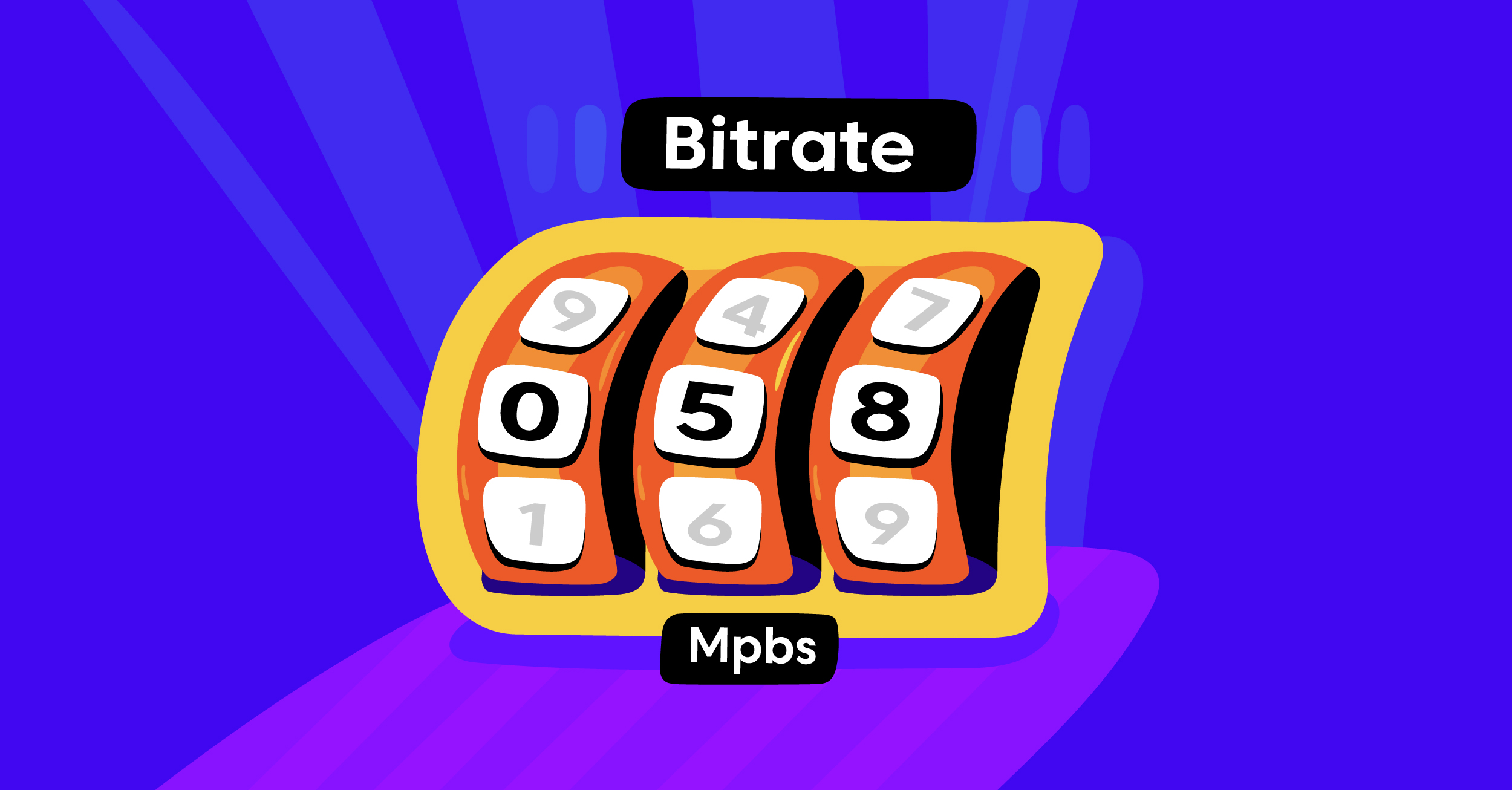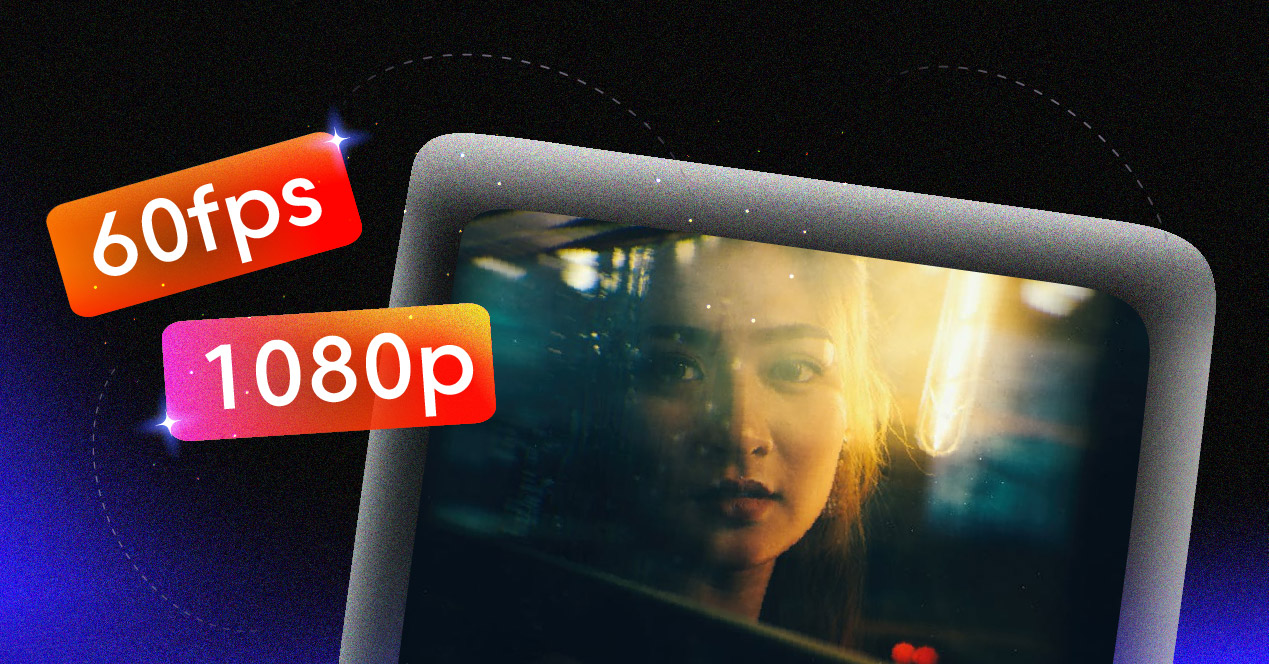Live streaming has become commonplace today. Many individuals and businesses use this method of communication to reach their target audience in real-time. One of key aspects when considering live streaming is the video and audio quality, which depends largely on the bitrate.
You may ask yourself, “What bitrate should I stream at?”. Choosing the right streaming bitrate can seem complex if you are unfamiliar with the ins and outs.
In this article, we’ll guide you on the best bitrate for streaming to ensure optimal video and audio quality.
What is Bitrate?
Bitrate refers to the amount of data, specifically the number of bits, processed in a specific time. In simpler terms, it’s the rate of the data transfer. There are two categories of bitrate – audio bitrate and video bitrate.
For audio, bitrate often means the number of kilobits of audio data used per second. A higher bitrate generally results in superior sound quality. But, with higher audio bitrate comes a larger audio file size. Thus, it’s essential to find a suitable balance.
In the context of videos, video bitrate is the amount of data the video uses per second. It is measured in kilobits per second (Kbps). Unlike audio, video bitrate has a significant impact on the video quality and the video file size.
If the video bitrate is higher, the video will be of higher quality, and the file size will be larger. As a result, more bandwidth will be required to transmit the video file over the internet. Therefore, figuring out the right bitrate is a balancing act for maintaining a good-quality video and efficiently using bandwidth to avoid buffering.
It’s also vital to consider the viewer’s internet connection speed. If the video bitrate is higher than their download speed, they’ll experience buffering. However, setting a lower bitrate can result in a lack of quality or a pixelated video.
The optimal setting of bitrate ensures a smooth and high-quality streaming experience. The recommended bitrate varies depending on the platform and the specific resolution of the video you’re streaming.
What Bitrate Should I Stream At? How to Find It?
Finding the right bitrate for streaming requires keeping several factors in mind. These include video resolution, frames per second (fps), internet speed, and the platform where the streaming will occur. Your primary goal is to maintain high-quality streaming while avoiding buffering.
Video resolution affects the bitrate. Higher-resolution videos contain more pixels, resulting in more data to transmit. For instance, streaming at 1080p, or full HD, requires a higher bitrate than streaming at 720p or standard HD. Likewise, videos at 60 fps will require a higher bitrate than those at 30 fps.
Your Internet connection speed is another essential factor. Irrespective of the video’s file size, your audience may encounter buffering if your upload speed needs to be increased. Hence, sustaining a higher bitrate requires a faster internet connection.
Different live streaming platforms also have their own recommended bitrate settings. Facebook Live suggests a maximum of 4,000 Kbps for video, while YouTube recommends a range from 1,500 to 4,000 Kbps depending on frame rates.
A significant element to consider is your audience’s internet speed. Although higher bitrates lead to higher-quality video, your viewers might face buffering if their download speed cannot keep up.
One last aspect to consider is that several streaming platforms use adaptive bitrate streaming. This technique adjusts real-time video quality based on the viewer’s network conditions. These are some considerations to help determine the best bitrate for streaming, which aims to strike a perfect balance between video quality and stable streaming.
How to Calculate Bitrate for Streaming?
Want to determine the ideal bitrate for streaming? One effective way is through Castr’s streaming bitrate calculator. This can help you calculate the optimum bitrate for your live streams. This ensures that your audience experiences a buffer-free and lag-free viewing.
The total bitrate you need highly depends on your internet connection. If you’re aiming for a high bitrate setting, remember that it would require a very stable internet connection. Failing to have a steady and fast connection often results in lags and buffering during the stream.
Streaming formats also play a part. If you use the h265 format, you can have high-quality video with a lower bitrate. This is thanks to the format’s advanced video compression. On the contrary, if you are using the widely adopted h264 format, a higher bitrate is needed for the best quality video.
Using Castr’s bitrate calculator can save you the trouble of guesswork. It furnishes you with accurate video bitrate and audio bitrate specific to your live streaming needs and video hosting. This way, you can balance video quality and internet speed. The main goal here is to stay within the recommended bitrate and refrain from exceeding your maximum number as suggested by the calculator.
Remember that bitrate measures the rate at which you send bits to your streaming platform. It’s all about how much audio and video data is transmitted over a particular duration. Standard measurements are in kilobits per second (kbps) and megabits per second (Mbps). The more the bitrate, the faster your internet connection needs to be when streaming video content online.
Moreover, pay attention to your internet upload speed. If it’s faster than the bitrate for the chosen video quality, you should be able to stream at that quality without any issues. Remember, upload speeds are critical here, as they denote the rate at which a device can send data over an Internet connection.
Lastly, consider the frames per second (FPS) or the frame rate. Normally, 30 fps is used for standard video, while 60 fps is for high-definition video. The FPS you choose drives the smoothness of your streaming video and the “lag time” between image changes. All these play a vital role in ensuring your viewers have an enjoyable streaming experience with no issues.
What Happens If I Set My Bitrate Too High?
Bitrate is a crucial element in determining the quality of your streams. But what if you set it too high?
If you set your bitrate too high, it can create several issues. Firstly, your internet connection speed may not support this high bitrate. It could result in dropped frames and decreased video quality, or your stream might fail to work. The same goes for the upload speed; you need to ensure your upload speed can handle the bitrate you’ve set.
Secondly, a high bitrate can cause a buffering problem for your viewers. Especially if their internet connection speed can’t keep up with your high bitrate, they’ll likely experience much buffering. This could be frustrating and prompt them to leave your stream.
Lastly, remember that each streaming platform has guidelines for the maximum bitrate you should use exceeding such limits may violate their policies and render your content unviewable. So, setting the right bitrate is a delicate balancing act between maintaining great quality and ensuring an uninterrupted viewing experience.
What Happens If I Set My Bitrate Too Low?
Bitrate affects the quality and smoothness of your broadcasts. So, setting it too low might affect your streaming negatively.
Streaming at a lower bitrate might make your stream run smoothly even on a slower internet connection, but there’s a downside. If you set your bitrate too low, your video quality will suffer. Regardless of the original video resolution, videos streamed at a lower bitrate will appear blurry or pixelated. Furthermore, audio quality can also degrade if the audio bitrate is too low.
A low bitrate might cause your stream to violate the minimum bitrate guidelines set by streaming platforms. This could result in your stream being stopped or blocked.
It’s a delicate balancing act to find an optimal bitrate. It would help if you aimed for a bitrate that can give your viewers a good quality video without buffering and also works well with your upload speed. Remember, a quality video stream depends on finding the right bitrate.
What Is Adaptive-Bitrate Streaming?
With the advent of adaptive bitrate streaming, the possibility of delivering a smooth, high-quality streaming experience has increased, irrespective of viewers’ network conditions.
Adaptive bitrate streaming is a technology used in streaming multimedia over computer networks. It works by detecting a viewer’s bandwidth and adjusting the quality of the stream in real time, providing the best possible picture quality with the viewer’s current network conditions.
Adaptive bitrate streaming aims to offer a smooth playback experience, with the least buffering possible and the highest quality video. It achieves this objective by constantly adjusting and selecting the bitrate most suited to the current network conditions.
For example, if your viewer’s network speed suddenly drops, the adaptive bitrate streaming can decrease the video quality to avoid buffering. It can also enhance the video quality if the network speed improves, all without interrupting the playing video stream. Hence, it delivers an optimized viewer-specific streaming experience.
How to increase stream quality
Here are ten tips to help increase the quality of your stream:
1. Know Your Upload Speed
Before you start adjusting settings, it’s important to gauge your recommended upload speed. The speed of your internet connection will impact the quality of your live stream. Too slow, and your stream will buffer; too fast, and you might consume unnecessary bandwidth.
2. Optimize Your Bitrate Settings
Your bitrate settings play a huge role in determining the quality of your stream. A higher bitrate will result in a higher quality stream and more upload bandwidth. Study the best video bitrates recommended by your chosen streaming platform.
3. Stream at a High Resolution
The resolution of your stream can significantly impact its quality. High-definition, or HD, is a popular option. However, ensure your upload speed and bandwidth can support this higher resolution.
4. Choose the Right Video Frame Rate
The video frame rate (frames per second) will also affect the smoothness of your video. Standard video typically uses 24-30 fps, while high-quality video may use 60 fps.
5. Use Reliable Encoding Software
An encoding software translates your video into a digital format suitable for uploading. Always opt for a reliable one.
6. Upgrade Your Equipment
Consider investing in superior recording equipment. High-definition cameras and specialized dynamic microphones can significantly boost the quality of your video and audio, respectively.
7. Good Lighting is Essential
Good lighting significantly impacts video quality. Ensure your streaming location is well-lit, and consider adding additional lights if required.
8. Regularly Test Your Stream
Conduct regular live tests to check your stream’s performance. This will help you identify any technical issues you must address before going live.
9. Limit Other Internet Usage While Streaming
Try to limit other internet use during your streaming session, especially activities using high upload bandwidth. This will ensure resources aren’t divided, resulting in better streaming quality.
10. Regularly Update Your Hardware and Software
Technology evolves fast. Regular updates of your streaming software, web plugins, and media players are crucial for optimal streaming quality.
By implementing these tips, you’ll be on your way to achieving enhanced streaming quality. Remember, an excellent quality stream will always provide a better viewing experience to your audience, boosting engagement and satisfaction.
Conclusion
Deciding on the best streaming bitrate is important. It directly determines the quality of your live streams, affecting the overall viewer experience. Balancing video quality and internet speed is key to a seamless streaming experience. Advanced features like adaptive bitrate and multi-CDN come into play here, allowing optimal streaming at different internet speeds and conditions.
Castr comes with a fully-featured live-streaming solution. It is designed to tackle these video streaming concerns. It provides live streaming features, video on demand, and video hosting capabilities. Powerfully equipped with advanced adaptive bitrate technology and multi-CDN, it ensures low-latency streaming for a buffer-free viewer experience.
Ultimately, the right bitrate depends on your unique streaming circumstances. Using Castr’s bitrate calculator, you can determine the right streaming bitrate for delivering the best content for your audience. It’s all about finding the sweet spot that suits your internet connection and streaming needs.
Why not take the next step towards an exceptional streaming experience? Try Castr today and experience the difference it brings to your live streaming quality. It will help you ensure optimum bitrate and provide your viewers with the ultimate streaming experience.






![Top 10 Best Vimeo Alternatives in 2025 [Expert Picks]](https://castr.com/blog/wp-content/uploads/2025/11/Best-Vimeo-Alternatives.jpg)

